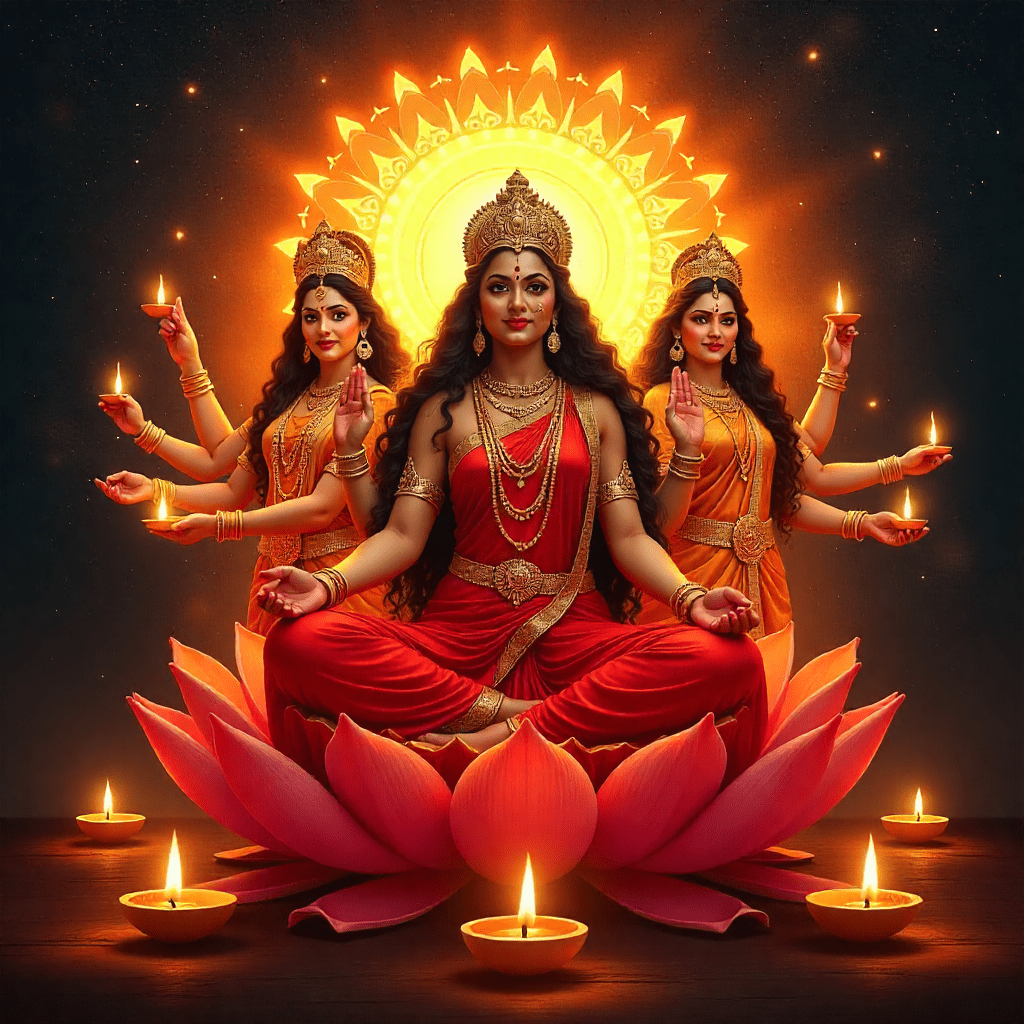Navratri and the Divine Feminine are deeply connected, reminding us each year that the Goddess is not only to be worshipped in rituals but also awakened and sustained within us.
The need to awaken and sustain this energy has perhaps never been greater than it is today. In a world driven by speed, control, and division, the Feminine calls us back to balance, nurturing, intuition, creativity, and the power of love.
For nine nights and ten days, Navratri offers us a living template of how to evoke, embody, and sustain Shakti, not just for a festival, but for life itself.
—
The Need for the Divine Feminine Today
1. Restoring Balance: Modern life often leans heavily on masculine qualities—logic, ambition, achievement. The Feminine restores harmony with compassion, intuition, and healing.
2. Healing the Earth: The ecological crisis reflects imbalance. The nurturing, protective energy of the Goddess is a guiding light for sustainability.
3. Personal Growth: Whether man or woman, acknowledging the Feminine within makes us more whole, tender, and creative.
4. Spiritual Evolution: Shakti is the life force of creation itself. Without honoring Her, our spiritual journey remains incomplete.
—
The Significance of Navratri in Awakening Shakti
Navratri literally means “nine nights.” Each night is dedicated to a form of Durga, Lakshmi, or Saraswati—the three cosmic expressions of the Goddess.
Durga: The warrior energy that removes darkness and fear.
Lakshmi: The radiant energy of abundance, harmony, and love.
Saraswati: The wisdom energy of knowledge, creativity, and truth.
Together, these nine days mirror a seeker’s journey: from clearing negativity to receiving abundance to resting in wisdom. It is a roadmap for inner transformation.
—
Ways to Evoke the Divine Feminine
1. Daily Rituals: Light a diya, offer flowers, and chant mantras like “Om Dum Durgaye Namah”. Small, consistent actions invoke big energies.
2. Sacred Space: Create a corner in your home with fresh flowers, candles, and a Goddess idol or symbol.
3. Nature Connection: The Feminine is nature Herself. Walk barefoot on grass, listen to rivers, sit with trees.
4. Creative Expression: Dance, sing, paint, or write. The Goddess flows through creativity.
5. Acts of Compassion: Serve others—feed the needy, care for animals, nurture your community. Compassion is Shakti in action.
—
How to Sustain the Energy Beyond Navratri
Balance Action with Rest: The Feminine thrives when you allow cycles of activity and stillness.
Listen to Intuition: Trust the quiet voice within—it is the Goddess guiding you.
Sacred Sisterhood/Brotherhood: Surround yourself with people who honor and uplift the Divine Feminine.
Daily Gratitude: Acknowledge the Goddess in the food you eat, the breath you take, the relationships you cherish.
Integrate Ritual into Life: Even after Navratri, light a small diya each morning as a reminder of Shakti’s presence.
—
Guided Ritual for Navratri
You’ll Need
A diya (lamp)
Red or white flowers
A small bowl of water
A mantra or affirmation
Steps
1. Invocation (2 min): Light the diya and say: “I invite the Divine Feminine into my heart and home.”
2. Offering (5 min): Place flowers near the flame, symbolizing devotion.
3. Water Blessing (3 min): Hold the bowl of water and whisper your intention—peace, courage, creativity. Sprinkle it around your home.
4. Chant or Affirm (7 min): Repeat: “I honor Shakti within and around me.”
5. Closing Silence (5 min): Sit quietly, visualizing radiant energy enveloping you.
—
Affirmations for the Nine Days of Navratri
“I release fear and awaken courage.”
“Abundance flows through me with ease.”
“Wisdom guides my path.”
“The Goddess lives within me.”
“I honor balance, compassion, and creativity.”
—
Global Parallels of the Feminine Divine
Mother Mary (Christianity): Embodiment of compassion and grace.
Kwan Yin (Chinese Buddhism): Goddess of mercy and kindness.
Gaia (Greek): The personification of Earth.
African Orishas (Yoruba): Feminine deities representing rivers, fertility, and love.
Native American Traditions: The Great Mother as the nurturer of all life.
These parallels reveal a universal truth: every culture reveres the Feminine as life-giver, nurturer, and protector.
—
Closing Blessing
May these nine sacred nights awaken Shakti within you.
May you find the courage of Durga, the abundance of Lakshmi,
and the wisdom of Saraswati flowing endlessly in your life.
The Goddess is not separate—She is You.
Read more wisdom on Dhyanseed.com

